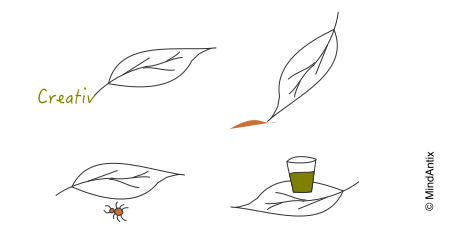From the Greek Daemons to Galton’s historiometry, human creativity has been a subject of fascination for many centuries. Formal scientific inquiry into this space, however, is considered to have started after J.P. Guilford’s Presidential Address for the American Psychology Association in 1950 where he stressed the importance and need for research into Creativity. That led to a spate of research in different aspects of Creativity and finally some consensus on what Creativity means.
Creativity, by most definitions now, means coming up with ideas that are both novel and useful. Psychologist, Dean Keith Simonton, expressed Creativity as
Creativity = Originality x Appropriateness
In other words, if an idea is original, but it doesn’t solve any problem or isn’t appropriate in that context, then it is not creative. Similarly, if the idea is useful and appropriate but isn’t new, then again it isn’t creative.
This focus on both originality and appropriateness is what makes Creativity tricky. And what’s the most recommended way of coming up with a creative idea? Coming up with lots of ideas!
In fact, Guilford believed that divergent thinking, or the ability to generate many ideas to a solution, was an important subset of creative thinking. While he did not think that divergent thinking alone could be equated with creativity, it has become one of the more well-known aspects of creativity.
Guilford’s model of divergent thinking has turned out to be a useful way to evaluate individual creativity, and it’s the model we are now using for teachers to evaluate student responses on MindAntix. In his model, divergent thinking includes 4 different components, explained using an Alternate Uses Task (possible uses of a leaf):
Fluency: Fluency is the ability to generate lots of ideas. If Ann comes up with 20 uses for a leaf while Ben comes up with 7, then Ann shows more fluency than Ben.
Flexibility: Flexibility is the ability to come up with different categories of ideas. Suppose Ben thought of using the leaf as a placemat and as a shelter for a bug, and Ann thought of using the leaf as a paintbrush and as a quill. Ann’s ideas fall in the same category of writing/drawing instrument whereas Ben’s ideas fall in different categories. In this case, Ben shows higher flexibility than Ann.
Originality: Originality is the ability of generating unique or unusual ideas. Using the same example as above, if no one else thought of Ben’s idea of using the leaf as a bug shelter, then that idea is original. Practically, responses given by 5% or 1% of the respondents are considered unique.
Elaboration: Elaboration refers to the ability to add details and fill in the gaps. For instance, if Ann responded with “hold the leaf from the stem and dip the tip into paint to use as a paintbrush” instead of “use as a paintbrush”, she would score higher on elaboration.
Torrance, psychologist most famous for his work on creativity, lamented that “Children are so accustomed to the one correct or best answer that they may be reluctant to think of other possibilities or to build up a pool of ideas to be evaluated later.” Guilford’s model of divergent thinking provides a handy way to help move children move past the one-right-answer mindset.

